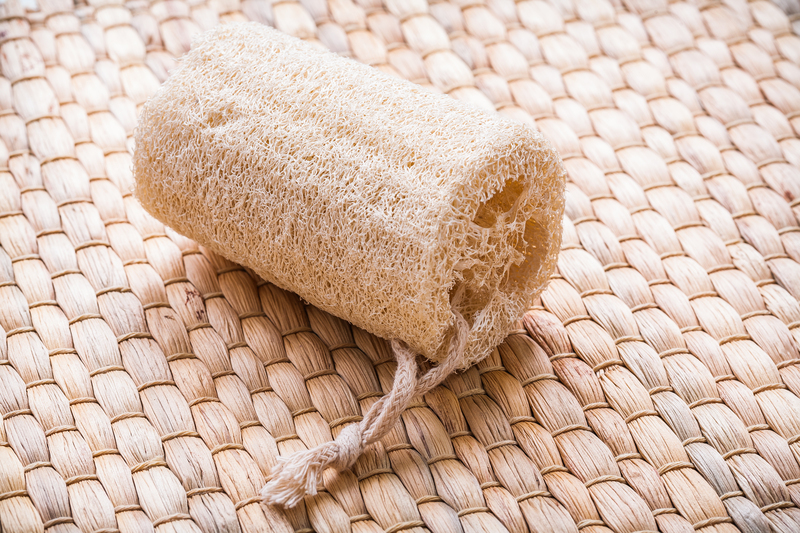Easiest Methods for Cleaning Mouldy Window Sills
Posted on 03/06/2025
Easiest Methods for Cleaning Mouldy Window Sills
Is your home plagued by mouldy window sills? Mould can be unsightly, unhealthy, and persistent if not addressed quickly and efficiently. If you notice black or dark spots around your windows, it's important to act fast to protect both your property and your health. In this comprehensive guide, you will discover the easiest methods for cleaning mouldy window sills with solutions suitable for different levels of contamination and window sill materials. Whether you choose natural remedies or commercial products, preventive tips and maintenance advice are included for a long-term, mould-free home.
Why Do Window Sills Get Mouldy?
Before tackling effective mould removal, it's essential to understand why mould appears on window sills in the first place. Mould thrives in moist, dimly lit, and poorly ventilated environments. Window sills, particularly those made of wood or painted surfaces, can attract condensation--especially in bathrooms, kitchens, and older properties.
- High Humidity: Frequent steam, cooking, or lack of ventilation increases room humidity and mould risk.
- Condensation: Cool surfaces like windows attract condensation during temperature fluctuations.
- Poor Ventilation: Inadequate air flow means lingering moisture, providing the perfect breeding ground for mould spores.
- Old or Damaged Window Seals: Cracked or compromised seals allow water ingress, fostering damp conditions.
By knowing the causes, you can apply the right cleaning and preventive strategies for your specific situation.

Safety Precautions Before You Start Cleaning Mouldy Window Sills
Safety should always come first when dealing with mould removal. Even small patches can release spores and mycotoxins that might irritate your lungs, eyes, and skin. Before learning about the easiest mould removal methods, prepare with the following precautions:
- Wear gloves: Protect your hands from direct contact with mould and cleaning products.
- Use a mask (N95 preferred): Avoid inhaling harmful spores.
- Goggles: Shield your eyes from splashes or irritants.
- Open windows: Promote airflow to disperse fumes and spores.
- Cover floors and nearby furniture: Lay down old towels or plastic sheets to catch any dripping solution or debris.
With safety in mind, you're ready to use the simplest and most effective mould cleaning techniques.
1. Natural & Homemade Solutions for Cleaning Mouldy Window Sills
1.1 White Vinegar Solution
One of the easiest methods for cleaning mouldy window sills is by using everyday household white vinegar. Vinegar is a natural antifungal and can kill up to 82% of mould spores on contact.
- Fill a spray bottle with undiluted white vinegar.
- Spray generously onto the mouldy areas of your window sill.
- Let it sit for 1 hour (letting it soak ensures deep cleaning).
- Wipe down with a clean, damp cloth.
- Repeat as needed.
Vinegar might leave a lingering scent, which fades quickly. For stubborn stains, scrub gently with a soft-bristle brush.
1.2 Baking Soda Paste
Baking soda is a safe, gentle abrasive and deodorizer. It's perfect for removing mould from painted window sills without damaging the paintwork.
- Mix 1 tablespoon of baking soda with enough water to create a thick paste.
- Spread the paste onto the window sill using a cloth or sponge.
- Leave for 10-20 minutes.
- Scrub gently in a circular motion.
- Wipe away residue with a damp cloth.
- Tip: Combine baking soda and vinegar for extra cleaning power. The fizz helps lift stubborn mould.
1.3 Hydrogen Peroxide
3% hydrogen peroxide is another powerful remedy for tough black mould on window sills. It kills spores, disinfects, and is safe for most painted and wooden surfaces.
- Pour hydrogen peroxide into a spray bottle.
- Spray onto the mouldy window sill area.
- Let it fizz and bubble for 10 minutes.
- Scrub with a sponge or brush.
- Wipe clean with a dry cloth.
Note: Test on an inconspicuous area first, as hydrogen peroxide can sometimes bleach coloured paints.
2. Commercial Cleaning Solutions for Mouldy Window Sills
Sometimes, stubborn or extensive contamination may require specialized products. Commercial mould removers are designed for quick, effective cleaning of window sills affected by heavy fungal growth.
2.1 Antifungal Sprays
- Follow the product's instructions carefully.
- Spray onto the mouldy region, ensuring thorough coverage.
- Allow the recommended dwell time.
- Wipe with a moistened cloth or sponge.
Antifungal sprays are especially useful if you have repeated mould growth or extensive black spots. Many brands promise long-lasting protection against mould regrowth.
2.2 Bleach-Based Cleaners
Bleach kills mould but can sometimes damage paint or wood. If your window sill is white and unvarnished or made of PVC, bleach is a powerful disinfectant.
- Mix 1 part bleach to 4 parts water.
- Apply the solution using a spray bottle or sponge.
- Let the solution sit for 5-10 minutes.
- Scrub and wipe down thoroughly.
- Rinse with clean water and dry with a towel.
Caution: Never mix bleach with ammonia or other cleaners. Ensure good ventilation.
3. Deep Cleaning for Persistent or Large Mould Patches
For large, stubborn, or recurring mould patches on window sills, you may need to use additional tactics:
- Sandpaper: For wooden sills, lightly sand the affected area after cleaning and repaint with a mould-resistant paint.
- Powerful Commercial Cleaners: Use specialist products for deep-set or embedded mould in porous materials.
- Steam Cleaner: High-temperature steam penetrates and kills mould in cracks and crevices.
If the mould is severe, or if it keeps returning despite repeated efforts, call in a professional mould remediation service. There may be unseen water leaks or extensive internal growth that requires expert attention.
4. How to Prevent Mould on Window Sills
Once you've learned the easiest methods for cleaning mould off window sills, preventing recurrence is crucial for a healthy home.
Essential Prevention Tips
- Ventilate: Open windows or run exhaust fans, especially in bathrooms and kitchens.
- Use Dehumidifiers: Keep indoor humidity below 60%.
- Wipe Window Condensation: Absorb any water build-up each morning in cold weather.
- Repair Damaged Seals: Check window frames, glazing, and exterior caulking for leaks.
- Choose Mould-Resistant Paint or Sealant: Especially for wooden windows and sills.
- Move Plants: Avoid placing potted plants directly on window sills, as water leakage can encourage mould.
Regular inspection lets you spot small areas of growth early before they become serious problems.
5. Frequently Asked Questions (FAQs)
Is it safe to clean black mould on window sills myself?
Yes, small areas (less than 1 square metre) can generally be cleaned safely with the above methods, using proper protection (mask, gloves, goggles). If you have allergies, asthma, or a weak immune system, or the area is very large or keeps returning, consult a professional.
Is vinegar or bleach better for cleaning mould off window sills?
Both are effective, but vinegar is safer for most surfaces and less harsh than bleach. Bleach is best for non-porous surfaces like plastic or ceramic, while vinegar is ideal for painted wood or finished wood sills. Never mix them together.
How can I remove mould from painted window sills without damaging the finish?
Use baking soda paste or diluted vinegar, applied gently with a soft cloth or sponge. Avoid abrasive brushes or harsh chemicals to protect the paint.
Can I prevent mould on window sills permanently?
While it's impossible to guarantee absolute prevention, following regular cleaning, good ventilation, and moisture control practices will significantly reduce recurring problems.

6. Summary: Quick-Reference Table of Mould Cleaning Methods for Window Sills
| Cleaning Method | Best For | Instructions | Precautions |
|---|---|---|---|
| White Vinegar | Most sills (painted, wood, PVC) | Spray, leave 1 hour, wipe | Test paint first |
| Baking Soda Paste | Delicate & painted surfaces | Spread paste, wait, wipe | Non-abrasive, safe |
| Hydrogen Peroxide | Stubborn black mould | Spray, bubble, scrub, wipe | May bleach colours |
| Bleach Solution | White/PVC sills, severe mould | Mix, apply, scrub, rinse | Ventilate, wear gloves |
| Antifungal Sprays | Recurring/large patches | Spray per product guide | Read labels carefully |
7. Conclusion: The Smartest Way to Handle Mouldy Window Sills
In summary, the easiest methods for cleaning mouldy window sills combine natural solutions like vinegar and baking soda, over-the-counter cleaners for stubborn stains, and preventive habits to ensure long-lasting results. Addressing mould growth promptly protects both your home's appearance and your family's health. Check your window sills regularly for early signs of mould and act quickly using the right method for your window material.
By following the advice in this guide, you will not only enjoy sparkling clean window sills but breathe easier in a healthy, mould-free environment. Don't let mould take hold--take action today with the best and simplest cleaning strategies available.
Looking to keep your whole home mould-free? Explore more of our cleaning and indoor maintenance tips, and share your results with us in the comments below!




